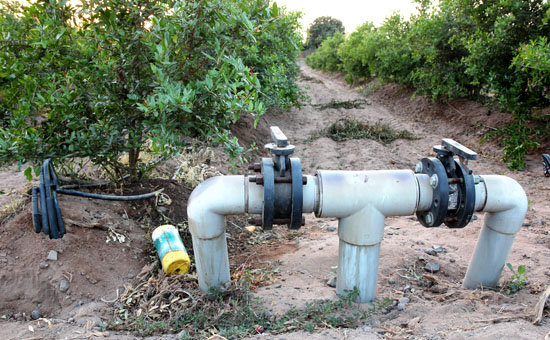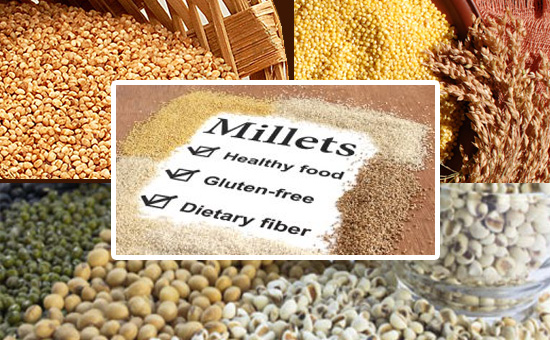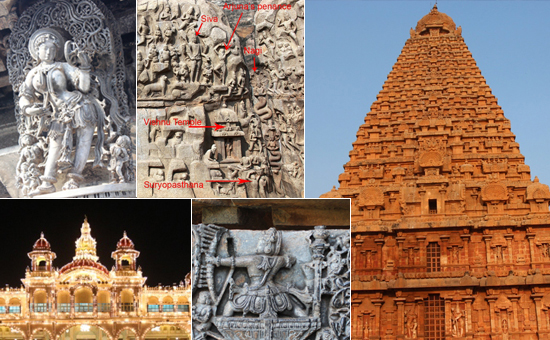- Given
the traction 3 Farm laws have got sharing 8 observations for e.g. role of SC, Protest is political, Regulating NRI ownership
of land, National Market, Chinese attack.
- Punjab
is dying-Will the State Government save it? To escape that Sikhs will buy land in
other states of North India and then seek to control farming there.
The
Prime Minister’s announcement on national television that the government would
withdraw the three farm laws took many by surprise. It led to celebrations by
farmer groups and activists spoke about the power of democracy/satyagraha. For
the first time in decades saw a Prime Minister who publicly apologised, forget
right or wrong.
Some
see it as a success of Rahul Gandhi. I see it as a failure of the BJP to
communicate effectively and Punjab farmer’s refusal to change. BJP needs tips
on Change Management.
Also read How
the BJP can effect change
Given
the traction these laws have attracted am sharing eight observations, starting
with key dates.
1.
June 5, 2020: Government promulgates ordinance on three farm laws.
2.
Sept 27: Bills notified, become law.
3.
Nov 26: Farmers reach Delhi borders and gherao city.
4.
Dec 11: Bhartiya Kisan Union moves Supreme Court (SC) against laws.
5.
Jan 12, 2021: SC keeps laws in abeyance and sets up a committee to suggest
changes. Later, farmer groups expressed no faith in the Committee.
6.
Jan 26: On Jan 19, SC refuses to stop tractor parade on January 26. Republic
Day violence by farmer groups and Khalistani sympathisers amidst tractor
rallies.
7.
March 11: Committee submits report to SC. Farmer unions refused to meet panel.
8.
November 19, 2021: Prime Minister announces withdrawal of farm laws.
Key Observations
1. SC - It is not known on what basis the SC stayed the implementation of Farm Laws. Did these laws violate any fundamental rights?
Perhaps
the judges were worried there would be a repeat of the violence and hurt Sikh
sentiments like when Akali leader Harchand Singh
Longowal announced, on 6 November 1982, that the Akali Dal would demonstrate in
Delhi during the Asian Games. Instead, Delhi Police were beaten by Sikhs on
26/1/2021.
Question–is this a matter of law and decision
for the Honourable Judges to take?
Groups
petitioned the SC too. According to this livelaw.in
report, “On October 12, 2020,
SC issued notice on petitions that challenged the three farm laws. The
petitions challenged the constitutional validity of these laws and also
questioned the competence of the Parliament to enact the same on the ground
that these were state subjects.”
Between 12/10/2020 and 19/11/2021 the SC did not
pass an order on the legality of the three farm laws.
The expert committee submitted their report on 19/3/2021.
Up to 20/11/2021 i.e. for 8 months, SC did not make the
report public.
 Drip Irrigation in Kutch.
Drip Irrigation in Kutch.
2. Agriculture, State Subject: One of the basis on which Farmer groups and politicians challenged the farm laws was that agriculture is a state subject.
States have no qualms in
taking advantage of centrally sponsored schemes yet argue that agriculture is a
state subject. According to a Tribune report on Punjab Budget 2020-21, officials admit
dependence on grants from the Centre for various centrally sponsored schemes. “Punjab’s former Chief Minister Amarinder Singh asked
the Centre to create a fund of around Rs 25,000 crore to help farmers switch
from paddy to maize.” Source
Indian Express
These double-standards
need to end.
Also read Indians
need a masterclass on responsibility and accountability of each arm of the government
Centre must withdraw the Agriculture
Infrastructure and Development Cess that was levied
on petrol and diesel in Budget 2021 since agriculture is a state subject.
Atleast consumers will enjoy lower prices.
3. Protests is about politics, not farmer rights: The late Sunil Jain (Managing Editor of Financial Express) wrote in November 2020, “The agitation is purely an attempt to corner the Modi
government, to boost the sagging fortunes of the Congress party by deliberately
misleading farmers. That is why, before Captain Amarinder Singh decided to fuel
the agitation, he used to be batting for increased diversification to non-MSP
crops/livestock in the state.” Congress leader Sunil Jakhar praised Amarinder
Singh’s handling of farm stir, says protest was directed towards Delhi.” Source
New Indian Express
Thus, whether or not these farmer
protests are political is for you to judge?
If agriculture is indeed a
State subject, farmers should have directed their anger against state
governments instead of the Centre.
The BJP government looked at it as a
farmer issue, when it is an out an out political issue with support of
Khalistan sympathisers. We must know that the protest is largely Punjab
centric, where the maximum number of farmers are Jat Sikhs who were the biggest
votaries of the Khalistan Movement of the 1980s.
A Sikh is by nature, ready for a fight
and happy to make the supreme sacrifice. The Centre understood this and denied Sikhs a chance to become shahid.
One can expect the opposition to play with public sentiments by making a
memorial for those who died during protests (no fault of Centre).
Also read 95
years old Nihang dies at farmer protest site
4. Possible Chinese Attack: Though not in public domain, it is possible the government is expecting a Chinese attack, remember the attack on NEFA started in October 1962. At time of external attack the government did
not want to be pre-occupied by internal disturbances.
5. Let Punjab farmers decide their future: The problems of Punjab are known-over-exploitation of ground water, excessive use of pesticides, misplaced subsidy like free power etc. and also Cancer.
In fact farmers might know that, according to a draft report of the Central Ground Water
Board (North-Western region), Punjab will be rendered a desert within 25 years
if the exploitation of its underground water resources continues at the current
rate. Source
Also read Groundwater
misuse may rise manifold in Punjab due to lower charges
It seems that today’s farmers are not concerned about the future of the
next generation, hence desire to maximise gains from the present.
An enlightened farmer group would have realized the benefits
of the farm bills and suggested changes that addressed their concerns!
The Central government realized that
its communication of farm law benefits had miserably failed, so why should it also
lose political capital in trying to make farmers realize its benefits.
Let farmers of Punjab have
their way even if it means Punjab becoming a desert with more sick people. Eventually, these farmers will pay for their Karmas.
However, farmers across India could suffer.
Also
read Free
Power, MSP and Cancer, Is Punjab Dying
Do not be surprised if farmer groups, across
the country, soon petition the Centre and SC for restoration of some positives
in the farm laws. After all, why should they lose out because of Punjab? The
agitation has made them aware that procurement is
skewed in favour of Punjab, Haryana and Andhra Pradesh, which accounted for 54%
of the total rice procured by FCI in 2017-18
For that, WE need to give up
our obsession with the Hindi heartland.
 Centre must promote consumption of Millets. Credit Bio-Basics.
Centre must promote consumption of Millets. Credit Bio-Basics.
6. National Market and Storage: For long farmer groups and experts wanted a national
market for their products and an increase in storage facilities. The government tried to create a national market for
agricultural products by starting the eNAM portal in 2016, but it never took
off. Farm Bills sought to create a national market.
The Essential Commodities
Bill (ECA) of 1955 has its origins in Defence of India Rules, 1943, when India
was ravaged by famine and facing the effects of World War II. Agri-economist Ashok
Gulati wrote, “Current laws discourages private sector investment in storage,
as the ECA can put stock limits on any trader, processor or exporter at the
drop of a hat.”
Since the Punjab
government fritters away its resources on power subsidy, some want the Centre
to build storage facilities. Manjit S Kang wrote in Tribune
Chandigarh, “As of 2018 figures, India’s total grain storage capacity was 88 million
tonnes- of which some 13 million tonnes were in the Cover and Plinth (CAP)
storage under the skies. The Central Government should
allocate Rs 10,000 crore to create a grain storage capacity of 15 million
tonnes in the food-bowl states. Public-Private Partnership (PPP) could work
here, with the government providing the land needed and the private players
investing capital to construct silos.”
They do not realize
resource constraints. Hence, the farm laws sought to encourage private
investment. This will change now.
Farmers will continue to
suffer and hear state governments blame the Centre.
Also read Farmers
oppose land record details upload in Punjab
 Orchha near Jhansi is a must visit.
Orchha near Jhansi is a must visit.
7. Foreign Hand in farmer protests: While the Centre will take up the matter with foreign governments it can regulate ownership of agricultural land. Suggested framework.
NRI’s cannot purchase
agricultural land, plantation or farm land in India. But can inherit and hold
agricultural land. However, details of such inheritance must be uploaded on the
Reserve Bank of India and the state government websites. Details of lease agreements,
including Batai, between NRI and
resident Indians have to mandatorily be registered online, with state
governments, by the lessor.
An individual who is
not citizen of India and whose agricultural land yields any agricultural
produce cannot sell it at MSP to the state government or any Central government
agency directly or indirectly and receive sale proceeds. Any income of a NRI
who is not citizen of India, from inherited agricultural land given on lease,
has to be deposited in a NRO account and income-tax paid thereon.
Simply put,
agricultural income exemption and purchase at MSP is available only to resident
Indians who are citizens of India.
Also
read Regulatory
Framework for NRIs owning AGRICULTURAL Land
 There is more to India than the Taj.
There is more to India than the Taj.
8. Impact on Punjab and Uttar Pradesh Elections: Captain Amarinder Singh has limited appeal so if the BJP thinks it could form a government with him it is an illusion. Captain Singh did not
implement the SC order on Sutlej-Yamuna canal arguing it would revive the
demands for Khalistan. He might repeat the argument, and not reform even he
forms a government with BJP support. Modi might want to ensure that Sidhu or
AAP candidate do not become CM because of their ability to create irritants in the
government’s policy towards Pakistan.
If there is an impact, it could be in
U.P. where the RJD (Rashtravadi Janata Dal) and Samajwadi party are itching to
return to power.
As farming in Punjab becomes difficult, Sikh farmers will buy land in Madhya, Rajasthan and Uttar Pradesh. This way they will seek to control farming in large parts of North India and hold every government to ransom, with the sword of Khalistan looming large, being aware of Pakistan’s long-term support for it.
BJP leaders would do well to read how
appeasement led to Bhindrenwale achieving cult status in the early 1980s.
Also
read Why
mandatory MSP is a bad idea
Note-Another fall-out is that the risk-weightage by India
Inc’s investments (storage, warehousing and processing) in Punjab shall
increase significantly. Migration of Sikhs to North America shall increase. Sikhs
must realize that modern
day Sikhism is a colonial creation.
Pressure groups and vested interests
will try make the Centre reverse decisions like CAA. The government must stand
firm or it runs the risk of becoming a lame duck government till 2024.
Hope State governments
and politicians stop playing lip service to farmer’s welfare and assume
complete responsibility since agriculture is currently a State subject.
Shall always remember PM Modi’s
apology, requires guts. Do not view apology as victory or defeat but focus on
how to save Punjab!
Author is a Chartered Accountant and does not claim to be an expert on agriculture. All pictures by author. Article and pictures not to be
used without specific written permission from esamskriti.com
Also read
1. Repeal
of farm laws: What the Modi govt gained and lost
2. A setback
in the history of economic reforms
3. How
the British divided Punjab into Hindu and Sikh
4. What
is the problem in Punjab
5. What
happened during the Khalistani Movement
6. What
were the events that led to Operation Bluestar
7. Unity
between Sanatan and Sikh Dharma
8. Pics Golden
Temple or Hari Mandir
9. Pics
Keshgarh Sahib Gurudwara where Khalsa was founded on 30 March 1699
10. Did
Sikhs save Hinduism
11. Are
Hinduism and Sikhism different religions
12. Why
Dera Sacha Sauda draws followers
13. CAA
redeems historical promises
14. Guru
Nanak on Babur invasion